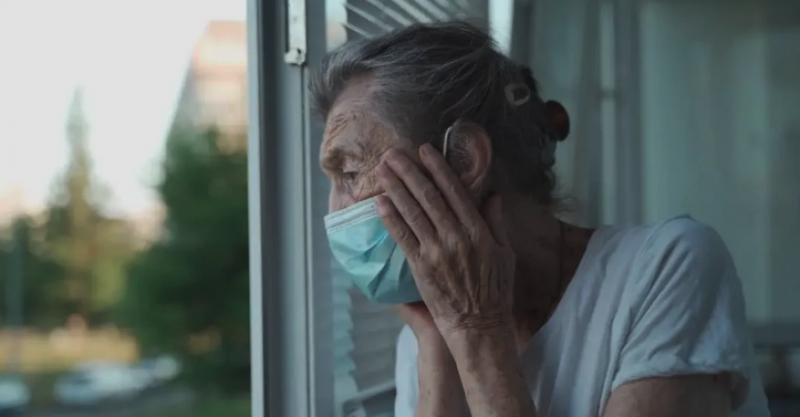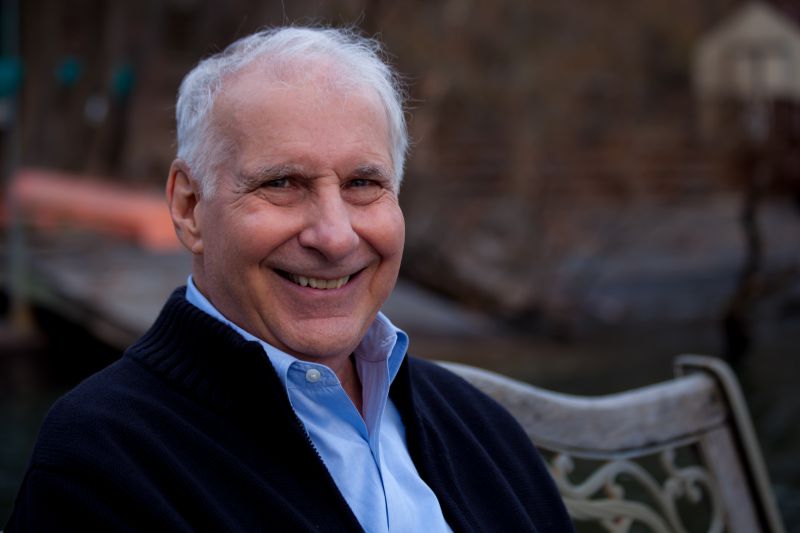Solitary Confinement! Global Predators want you isolated, lonely, and afraid
- January 24, 2024
- / Peter Breggin MD and Ginger Ross Breggin
- / America-Out-Loud,Substack,COVID-19,Globalism,Ginger_Breggin,Peter_Breggin

Solitary Confinement! Global Predators want you isolated, lonely, and afraid
evil used to lurk in dark alleys....
DR. PETER AND GINGER BREGGIN
Originally posted on Substack JAN 24, 2024
My hair is grey, but not with years,
Nor grew it white
In a single night,
As men’s have grown from sudden fears:
My limbs are bow’d, though not with toil,
But rusted with a vile repose,
For they have been a dungeon’s spoil,
And mine has been the fate of those
To whom the goodly earth and air
Are bann’d, and barr’d—forbidden fare…
The Prisoner of Chillon, By Lord Byron (George Gordon)(1)
I was twelve and just beginning the seventh grade in school when my new English teacher assigned us the task of reading collections of poetry and choosing a stanza of a poem to memorize. Somehow, I found my way to Lord Byron and his magnificent work, The Prisoner of Chillon. I can still recite it at will.
I was engrossed with the idea of being a captive, of being isolated and locked up, and I spent time contemplating how I could survive such a fate. Perhaps it was very early Bible stories, like the description of Daniel in the lion’s den, lost in the mists of childhood, that fed my imagination. Or my discovery, a year earlier, that local stray dogs were being held captive in a ramshackle shed at the edge of the town dump. The pleading eyes of the six or eight captive dogs haunted me, and I returned again and again to that shed the city called an animal shelter.
I do remember concluding that despite all other hardships, as long as my mind was intact, I could survive anything, even a dungeon. But I was just a twelve-year-old child.
solitary confinement, noun
ˈsɑl·əˌter·i kənˈfɑɪn·mənt/
the condition of being kept alone in a room in prison(2)
Solitary confinement has been used for centuries to control prisoners.(3) In recent decades, the practice has been used to control or punish what many would classify as political prisoners, including journalist Julian Assange and Army Pfc. Bradley Manning, who allegedly provided documents to WikiLeaks.(4) Many articles and papers have been published debating and criticizing the practice of solitary confinement.(5,6,7)
Most poignantly, an essay by Atul Gawande in 2009 describes the inhumane experiments of Harry Harlow, a University of Wisconsin professor of psychology, on infant rhesus monkeys in the 1950s.(8) The separation at birth from contact with any other monkeys, including the mother, led them to become “profoundly disturbed, given to staring blankly and rocking in place for long periods, circling their cages repetitively, and mutilating themselves.” The article continued to describe the effects of the isolation:
In a later study on the effect of total isolation from birth, the researchers found that the test monkeys, upon being released into a group of ordinary monkeys, “usually go into a state of emotional shock, characterized by . . . autistic self-clutching and rocking.” Harlow noted, “One of six monkeys isolated for three months refused to eat after release and died five days later.” After several weeks in the company of other monkeys, most of them adjusted—but not those who had been isolated for longer periods. “Twelve months of isolation almost obliterated the animals socially,” Harlow wrote. They became permanently withdrawn, and they lived as outcasts—regularly set upon, as if inviting abuse.
Other psychologists repeated and amplified the studies and findings, leading the way to massive reform culturally and legally regarding the treatment of children. (The abuse of animals in Harlow’s studies gave strength to the animal rights movement.)
The author of the New Yorker article, Gawande, then gets to the nub of his essay pointing out that much less has been considered regarding the effects of brief and prolonged isolation of adults. He surveys various reports — from prisoners of war and astronauts to solo long-distance sailors, examining how they felt and how they experienced their isolation along with other deprivations. The desolate loneliness that would overcome these explorers and others alone for months was reported to be the most difficult challenge.
Among our most benign experiments are those with people who voluntarily isolate themselves for extended periods. Long-distance solo sailors, for instance, commit themselves to months at sea. They face all manner of physical terrors: thrashing storms, fifty-foot waves, leaks, illness. Yet, for many, the single most overwhelming difficulty they report is the “soul-destroying loneliness,” as one sailor called it. Astronauts have to be screened for their ability to tolerate long stretches in tightly confined isolation, and they come to depend on radio and video communications for social contact.(9)
The problem of isolation goes beyond ordinary loneliness, however. Consider what we’ve learned from hostages who have been held in solitary confinement—from the journalist Terry Anderson, for example, whose extraordinary memoir, “Den of Lions,” recounts his seven years as a hostage of Hezbollah in Lebanon….
Gawande continued in his New Yorker article to describe Terry Anderson’s report of the experience and effects of seven years in captivity:
He missed people terribly, especially his fiancée and his family. He was despondent and depressed. Then, with time, he began to feel something more. He felt himself disintegrating. It was as if his brain were grinding down. A month into his confinement, he recalled in his memoir, “The mind is a blank. Jesus, I always thought I was smart. Where are all the things I learned, the books I read, the poems I memorized? There’s nothing there, just a formless, gray-black misery. My mind’s gone dead. God, help me.”
In reviewing these findings about imprisonment and solitary confinement, it is clear that solitary confinement, while sometimes done to protect prisoners from other inmates (for instance, when police officers are incarcerated), is often being used, as it has been from the beginning, to further punish.
To their credit, I notice that criticism of solitary confinement in the prison systems was most often expressed by reformers on the Left. Criticism of solitary confinement in the mental institutions was more broadly politically based. But all the criticisms have been muted, never rising to a national level of awareness demanding change.
Julie Kelly blew open the silence around J6 with the release and promotional interviews about her book, January 6. Kelly, along with some brave family members of J6 prisoners, have been speaking out about the extensive solitary confinement and other tortures and neglects these confined prisoners are suffering, most of whom have still not gone to trial.(10)
Looking back to the developing plans for COVID-19 and the takeover of the world, I am struck now by how many of the imposed “public health safety measures” were indeed requirements that isolated one individual from another.
Perhaps the most terrible of all was the isolation of patients from family, friends, and advocates. Anyone sick with COVID was not allowed to be seen or accompanied in hospital by family. Those classified as sick at home were ordered to isolate in a separate room with a separate bathroom until well, a recovery period that often took weeks in 2020.
The masks were also dreadfully socially isolating by cloaking identity, putting up a physical barrier between two communicating human beings. This was also true of the demands for six feet of distance between individuals and for the no physical contact rules. Handshakes and other physically connecting gestures go back into the deep mists of time in cultures all over the world. To ban the traditional greetings of an entire people is a hubris that knows no bounds, both authoritarian and humiliating, as we struggle to figure out how to greet one another, achieving awkwardly, at best, an elbow tap.
The imposition of these strategies in schools and with young children are beginning to show signs of long-term harm to the children.(11,12,13,14,15)
I am struck by the cruelty and malevolence of the imposed restrictions and rules of the COVID-19 era. There is so much coincidence in the rules actually replicating circumstances that have proven in the past to be destructive and torturous to the spirit of both higher animals and humans. Too much coincidence for it to be happenstance!
We know evil has always been with us on this earth. But evil used to lurk in dark alleys, hiding from the sunshine. Now, it is emboldened, swaggering about in broad daylight and ordering us about, demanding that we wound, humiliate, and torture one another and submit to all the irrational orders and to doses of toxic and often deadly injections.
We need to open our eyes. Cling to our rationality, to our reason, and to our God. Then we need to reject evil. Reject the humiliation. Reject the irrational and wounding behaviors and rituals being demanded of us. Take back our dignity and reclaim our sovereignty.
Primary author: Ginger Ross Breggin
References:
(4) Is Solitary Confinement A Form Of Torture For Army’s Alleged WikiLeaks’ Source? : The Two-Way : NPR
 Psychiatric Drugs
Psychiatric Drugs
 Psychiatric Reform Accomplishments
Psychiatric Reform Accomplishments